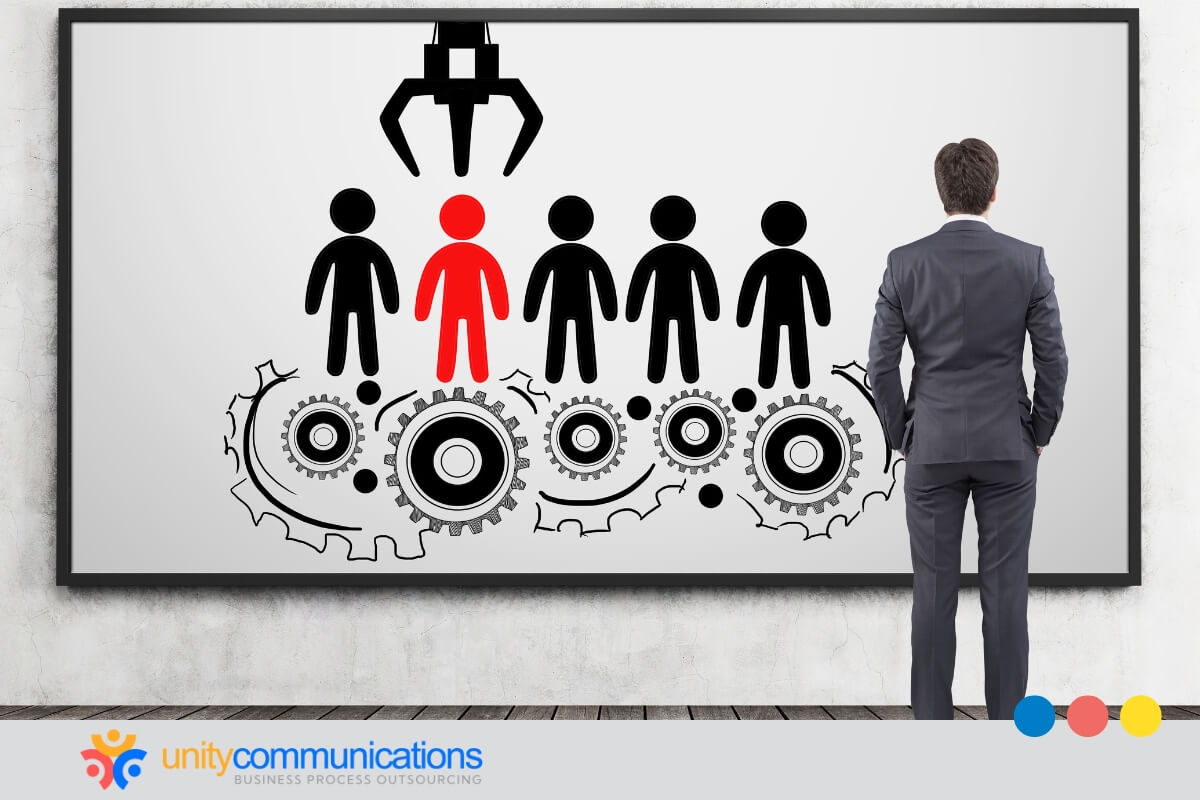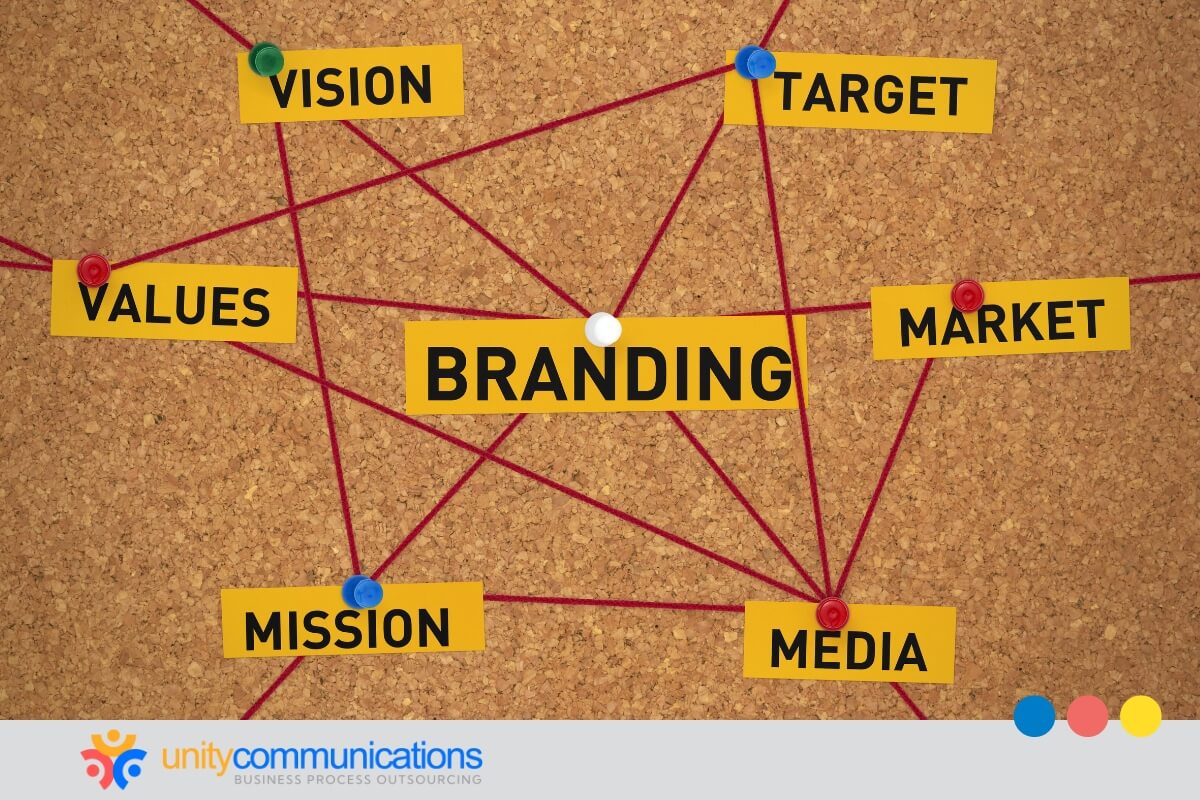Table of Contents
Businesses often face a challenging decision about outsourcing recruitment vs. internal hiring. Both approaches have distinct advantages and drawbacks in cost, efficiency, and talent acquisition.
While business process outsourcing (BPO) broadens access to talent and streamlines hiring, internal recruitment provides greater control and alignment with company culture.
Understanding the pros and cons of each strategy informs hiring decisions and supports long-term business success. Continue reading to learn more.
Scalability and flexibility in hiring: which model wins?

What is BPO, and how does it help scale your company? Business process outsourcing delegates some or all hiring tasks to external agencies to streamline talent acquisition.
Specialized recruitment firms handle candidate sourcing, screening, interviewing, and onboarding. Some recruitment services can customize other HR functions of BPO to meet your hiring needs. Examples include high-volume staffing, executive search, or global talent pooling.
BPO providers also excel in scalability. When your business grows or faces fluctuating hiring needs, outsourcing can quickly modify hiring efforts without overwhelming internal resources. They can also fill skills gaps quickly due to specialized expertise and technology, and reduce administrative burden so that you can focus on core operations.
Meanwhile, internal hiring offers:
- Greater control over the recruitment process and company culture alignment
- Limited scalability, as in-house teams might struggle with high-volume hiring
- Longer hiring processes, especially when resources are stretched thin
- Higher workload for internal HR, requiring additional staff during peak hiring periods
Choosing the right approach depends on your need for speed, adaptability, and resource availability in hiring.
Recruitment costs: in-house vs. outsourcing
Because recruiting talent affects the bottom line, weighing the costs of outsourcing recruitment vs. internal hiring matters.
Here’s a cost comparison of both strategies:
Outsourcing recruitment costs
- Recruitment agency or BPO service fees
- Lower internal human resource workload, reducing administrative costs
- Faster hiring process, minimizing revenue loss from vacant positions
- Access to advanced recruitment technology without additional investment
Internal hiring costs
- Salaries and benefits for in-house HR and recruitment staff
- Expenses for job postings, background checks, and assessments
- Longer hiring cycles, potentially leading to lost productivity
- Training and onboarding costs for new hires
While outsourcing can reduce overhead expenses, internal hiring might provide more control but require significant resource allocation. Carefully evaluating these costs helps you choose the most cost-effective recruitment strategy.
Speed and quality of hires: who does it better?
With 71% of businesses struggling to find quality workers, the decision about outsourcing recruitment vs. internal hiring becomes even more critical.
When you outsource recruitment, you experience:
- Access to a broader network of qualified candidates, including passive job seekers (now comprising 37.3% of U.S. workers)
- Faster hiring process due to specialized recruiters and advanced hiring tools
- Expertise in screening and assessing candidates for role-specific requirements
- Potential risk of cultural misalignment if not managed properly
Relying on an internal recruitment team leads to:
- Better alignment with company values and long-term workforce planning
- Slower hiring process due to limited internal resources and longer approval timelines
- Greater control over candidate selection and onboarding procedures
- Dependence on internal HR expertise, which might limit access to specialized talent
Outsourcing offers access to a broader talent pool and speeds up hiring. Internal recruitment provides greater control over candidate selection but can take longer, which is problematic in a competitive job market.
Selecting the right approach depends on whether a business prioritizes speed and efficiency or long-term cultural fit and control in talent acquisition.
Expertise and resources: external recruiters vs. in-house teams
When choosing between outsourcing recruitment and building in-house teams, you must consider the expertise and resources available in each approach. External recruiters offer industry knowledge, vast talent networks, and advanced hiring tools, while in-house teams have deeper insights into company culture and long-term workforce planning.
Below is a comparison of their strengths and limitations:
External recruiters
- Specialized industry knowledge and access to niche talent pools
- Advanced recruitment technology and data-driven hiring strategies
- Ability to quickly scale hiring efforts based on business needs
- Less familiarity with company culture and internal dynamics
In-house teams
- Deep understanding of company values, culture, and long-term goals
- Personalized approach to candidate selection and employee retention
- Limited access to external talent networks and specialized recruitment tools
- Dependence on additional training and resources to keep up with hiring demands
Deciding between external recruiters and in-house teams depends on your need for specialized expertise, hiring speed, and cultural alignment.
Employer branding and culture fit: what’s the trade-off?

Choosing between outsourcing recruitment and internal hiring can influence your brand and workplace culture. Internal hiring teams can align recruitment strategies with company culture and long-term workforce plans. They also have direct control over employer branding and candidate engagement strategies.
However, they have limited reach compared to external recruiters, potentially reducing diversity talent acquisition. This approach can also be resource-intensive, requiring dedicated HR efforts for consistent branding and hiring.
Third-party recruiters enhance employer branding by effectively showcasing the company to candidates. However, the chances of misalignment with company values are high if they do not prioritize cultural fit when selecting potential employees. They also have less influence on the applicant’s perception of the hiring process.
The right approach depends on whether a company prioritizes branding consistency and cultural alignment or efficiency and scalability in recruitment.
Hiring compliance and legal risks: who’s more prepared?
Compliance with labor laws, industry regulations, and employment standards prevents lawsuits, disputes, fines, and reputational damage. Outsourcing firms often have dedicated legal experts to navigate complex hiring regulations, while internal hiring teams must stay updated on evolving legal requirements.
Further, outsourcing recruitment:
- Reduces your legal liability as third-party firms handle employment classification and documentation
- Simplifies global recruitment with its expertise in international hiring regulations
- Improves documentation and audit readiness to enhance transparency
- Minimizes bias and promotes equitable hiring practices
Internal hiring teams have complete control over hiring policies, aligning them with industry standards. However, this approach can also introduce significant challenges.
It requires dedicated HR resources to comply with evolving labor laws and regulations. Staffing shortages and limited legal knowledge increase the risks of errors in employment contracts, wage and hour laws, and anti-discrimination policies.
Lastly, verifying legal requirements and adhering to laws are time-consuming, further straining an already-stretched HR team.
You must weigh the benefits of outsourcing legal expertise against the need for internal oversight to ensure a compliant and risk-free hiring process.
Recruitment technology: access, automation, and AI
Technology plays a crucial role in outsourcing recruitment vs. internal hiring by streamlining the hiring process and enhancing candidate selection. Since 89% of HR leaders maintained or increased their tech investments in 2024, businesses still see digital tools as essential for recruitment in 2025.
Outsourcing firms often use advanced recruitment software and artificial intelligence (AI)-driven tools to quickly identify top talent. A 2024 survey found that candidate matching was the most common AI application in North American recruitment. About 42% highlighted job recommendations on career sites, while one-third recognized AI’s role in promoting diversity, equity, and inclusion.
They also integrate large-scale applicant tracking systems (ATS) with customer relationship management (CRM) applications to improve communication and automate recruitment workflow. Additionally, they optimize recruitment strategies and reduce bias through advanced data-driven insights.
However, higher dependency on external technology can limit customization for company-specific needs.
Meanwhile, in-house teams can:
- Customize ATS to internal hiring workflows
- Possesses greater control over recruitment data through centralization
- Align recruitment tools closely with company-specific goals and compliance requirements
The drawbacks are limited access to AI-driven tools, requiring more manual effort in candidate screening, and higher costs for purchasing and maintaining technology.
Deciding between outsourcing and internal hiring depends on whether you want cutting-edge recruitment technology or control over hiring tools and processes.
Hiring for now vs. building for the future
When evaluating outsourcing recruitment vs. internal hiring, consider your staffing needs. Are they immediate or long-term?
Outsourcing is best for short-term hiring, seasonal demands, or rapid workforce expansion. A BPO company maintains a pool of pre-vetted candidates, reducing the time to hire and onboarding. This approach is also more cost-effective for temporary or project-based roles, although it focuses less on long-term employee retention and career growth.
Internal hiring is suitable for long-term workforce planning and employee career development. It builds a strong organizational culture and long-lasting team dynamics. Although longer hiring timelines can be costly, they can increase retention and engagement. However, they might struggle to fill urgent or temporary positions quickly, affecting your competitiveness.
Choosing between outsourcing and internal hiring depends on whether a company prioritizes immediate workforce flexibility or long-term employee investment.
Challenges to watch out for in each approach

Both internal hiring and recruitment outsourcing have challenges that can harm efficiency, cost, and talent quality.
With recruitment outsourcing, you have less control over the hiring process and company culture alignment. You can become dependent on third-party providers, leading to recruitment quality inconsistencies.
When you share sensitive information, the risks of data breaches and other cyber threats increase. Additional costs can accumulate, and contractual commitments with external recruitment agencies can complicate the partnership later.
The cons of in-house recruitment include the following:
- Longer hiring cycles due to limited internal resources and manual processes
- Higher costs for maintaining in-house recruitment teams and technology
- Difficulty in accessing specialized or global talent pools
- Potential bias in hiring decisions, affecting diversity and innovation
Understanding these challenges helps businesses choose the right hiring approach based on their specific workforce needs and operational priorities.
Choosing the right recruitment strategy for your business
With outsourcing recruitment vs. internal hiring, the choice depends on many factors:
- Hiring volume and urgency. Outsourcing is ideal for high-volume or fast hiring needs, while internal teams suit gradual workforce expansion.
- Budget and resources. Internal hiring requires investment in HR staff and tools, whereas outsourcing offers a pay-per-hire model.
- Talent specialization. Niche or highly technical roles might benefit from specialized recruitment agencies with deep industry expertise.
- Control and company culture. Internal hiring provides more control over selection and cultural fit, while outsourcing can introduce external perspectives.
- Scalability needs. Businesses with fluctuating hiring demands might find outsourcing more flexible than maintaining a full-time recruitment team.
These factors can help you select the recruitment approach that best aligns with your operational needs and long-term growth strategy.
The bottom line
Deciding between internal hiring and outsourced recruitment is a choice that affects cost, efficiency, and talent quality. Internal hiring offers greater control and cultural alignment, while outsourcing provides access to a broader talent pool and faster hiring processes.
Understanding their advantages and drawbacks helps you make informed decisions that align with your company’s goals, optimize resources, and strengthen your recruitment strategy.
Do you need more help with outsourcing recruitment vs. internal hiring? Let’s connect and explore the best approach to meet your headcount goals and business needs.




